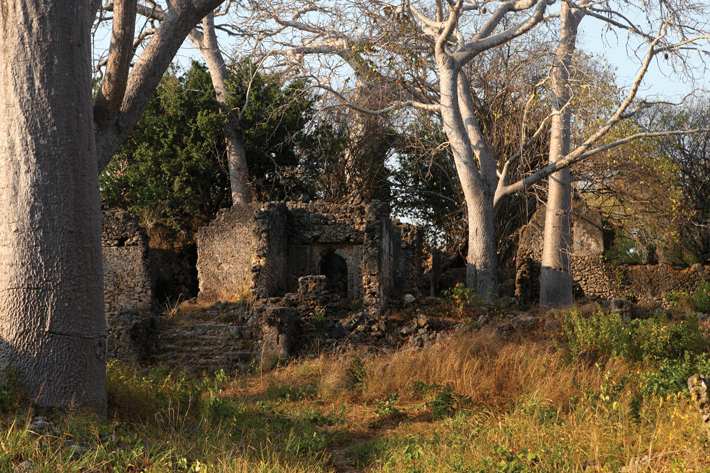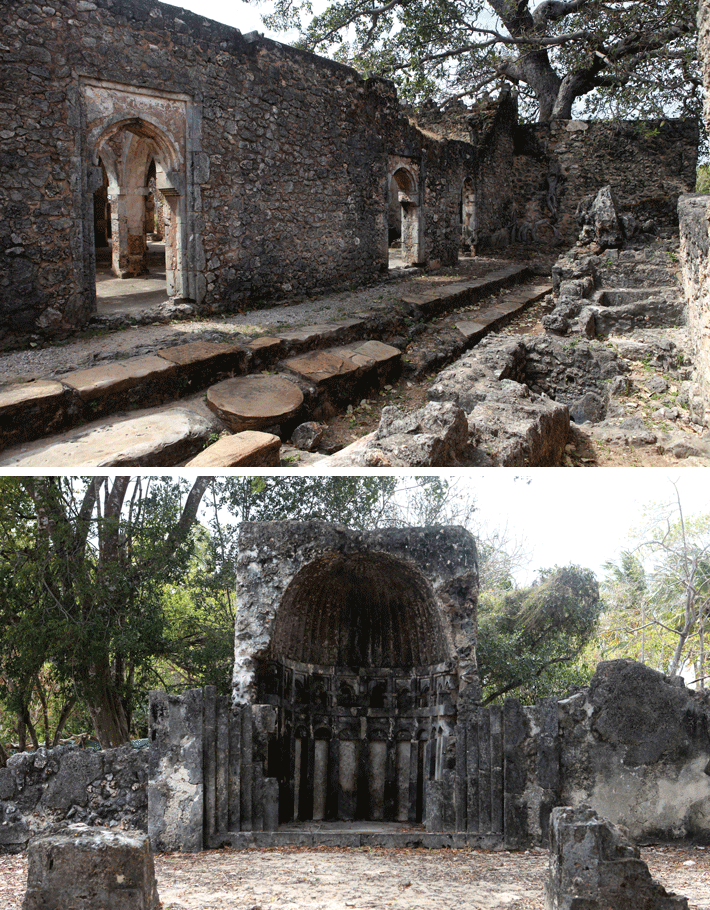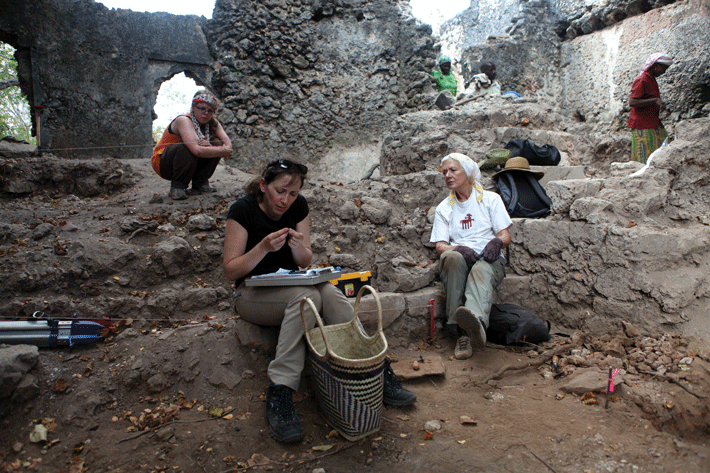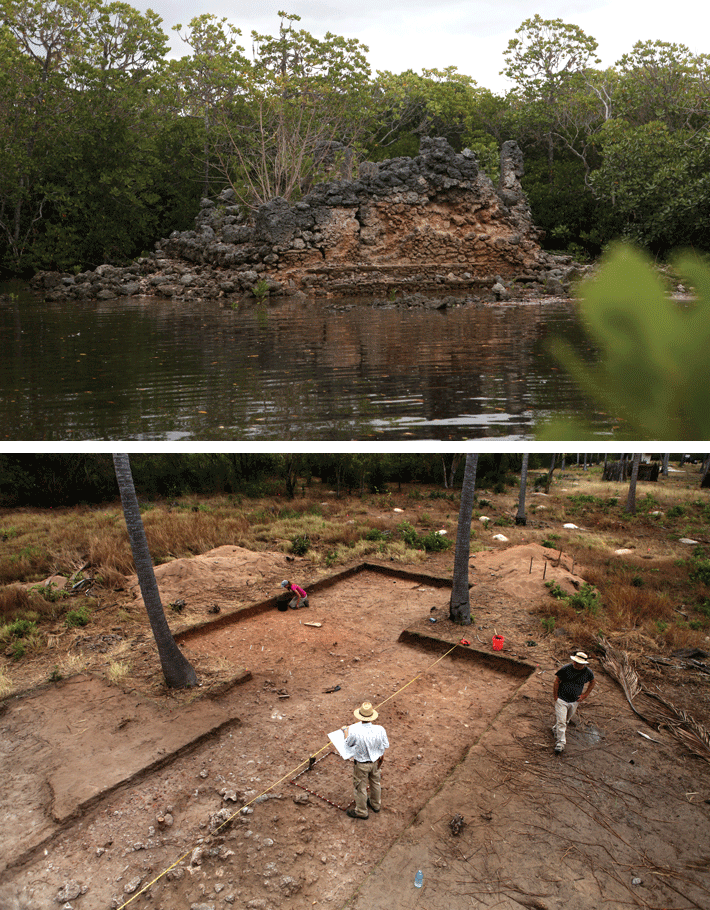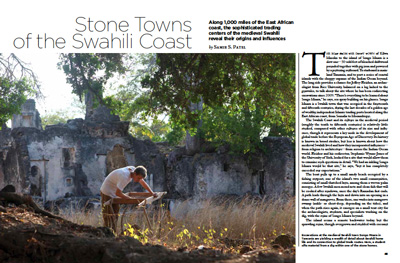Features
Stone Towns of the Swahili Coast
By SAMIR S. PATEL
Tuesday, January 14, 2014
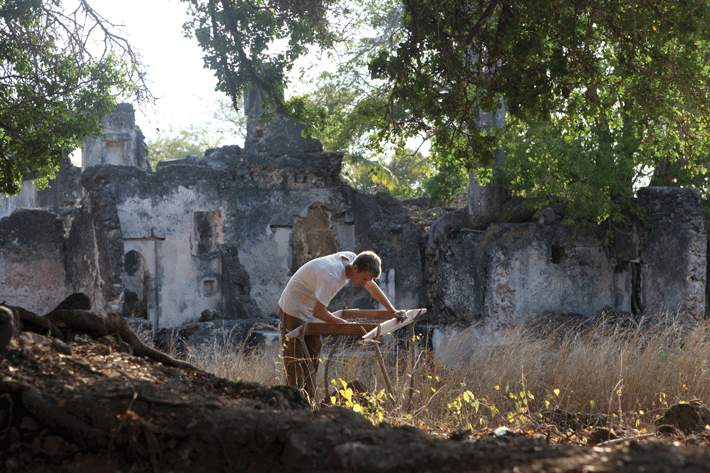
The boat from the dusty town of Kilwa Masoko to the island of Songo Mnara is a slow one—30 odd feet of bleached driftwood pounded together with pig iron and powered by a puttering outboard. To starboard is mainland Tanzania, and to port a series of coastal islands with the choppy expanse of the Indian Ocean beyond. The long ride provides a chance for Jeffrey Fleisher, an archaeologist from Rice University, balanced on a log lashed to the gunwales, to talk about the site where he has been codirecting excavations since 2009. “There’s everything to be learned about Songo Mnara,” he says, sea spray building on his glasses. Songo Mnara is a Swahili town that was occupied in the fourteenth and fifteenth centuries, during the last decades of a golden age of wealthy, independent Islamic trading ports located along the East African coast, from Somalia to Mozambique.
The Swahili Coast and its culture in the medieval period (roughly the tenth to fifteenth centuries) is relatively little studied, compared with other cultures of its size and influence, though it represents a key node in the development of global trade before the European Age of Discovery. Its history is known in broad strokes, but less is known about how the medieval Swahili lived and how they incorporated influences—from religion to architecture—from across the Indian Ocean world. Fleisher and his codirector, Stephanie Wynne-Jones of the University of York, looked for a site that would allow them to examine such questions in detail. “We had an inkling Songo Mnara would be that site,” he says, “but it has completely exceeded our expectations.”
The boat pulls up to a small sandy beach occupied by a fishing outpost, one of the island’s two small communities, consisting of small thatched huts, among them a woven-palm mosque. A few Swahili men mend nets and clean fish that will be cooked after sundown, once the day’s Ramadan fast ends. A path leads through the huts and down into an opening in a dense wall of mangroves. From there, one wades into mangrove swamp (ankle- or chest-deep, depending on the tides), and when the path rises again, it emerges on a small tent city for the archaeologists, students, and specialists working on the dig, with the ruins of Songo Mnara beyond.
The island seems a remote backwater today, but the sprawling ruins, though overgrown and studded with coconut palms and the stout, distended trunks of baobabs, tell another story—of a significant, wealthy, well-connected town. Among the dozens of ancient structures built of jagged blocks of coral, several excavation teams are at work. There are two large trenches in the town’s central clearing, and another inside one of the houses on the far side of the site. Wynne-Jones, who is overseeing the house dig, tromps through the overgrowth to greet Fleisher and review the day’s work. The archaeologists walk past graveyards and tombs in the center of town, through a series of interconnected two-story homes known as “the palace,” into two of the town’s six mosques, and around any number of other structures and enclosures, some of which have been partially stabilized and reconstructed.
The site represents an unusual opportunity for the archaeologists—a mature, intact, little-excavated Swahili town where they can examine what we think we know about Swahili commerce, the role of women in Swahili life, Indian Ocean trade, and the diversity and complexity of the coast’s medieval culture. “Everything has the ability to change the story in significant ways,” Fleisher says.
|
Sidebar:
|
Online Exclusive:
|
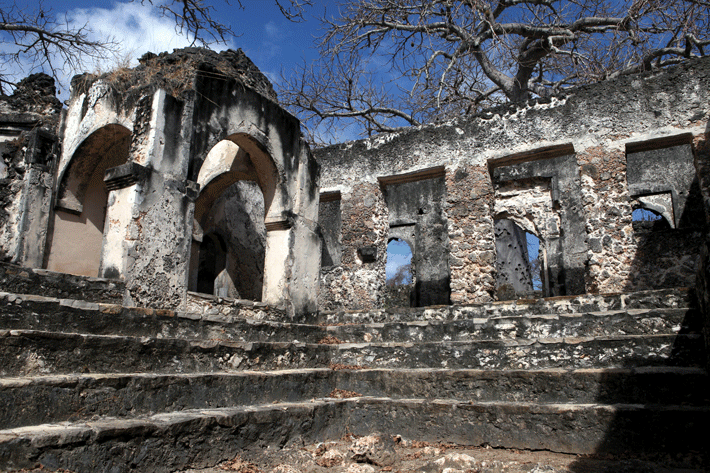
Matters of Context
|
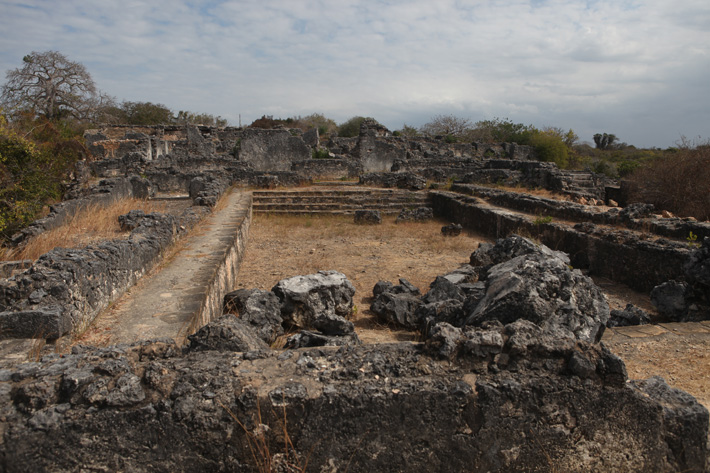
The Sultan’s African Palace
|
Top 10 Discoveries of 2013
By THE EDITORS
Tuesday, December 10, 2013
 The most celebrated archaeology story in recent memory is the 2013 confirmation that bones thought to belong to King Richard III, found beneath a parking lot in Leicester, were, in fact, those of the infamous English monarch. Naturally, it leads our Top 10 Discoveries of 2013.
The most celebrated archaeology story in recent memory is the 2013 confirmation that bones thought to belong to King Richard III, found beneath a parking lot in Leicester, were, in fact, those of the infamous English monarch. Naturally, it leads our Top 10 Discoveries of 2013.
But a discovery needn’t involve a historical figure whose life was dramatized by no less a personage than Shakespeare in order to make the cut. In archaeological hot spots such as Egypt and Rome, the news was every bit as exciting. On the coast of the Red Sea, archaeologists uncovered Egpyt’s oldest port. And just 20 miles outside Rome, the discovery of that city’s first monumental architecture—the iconic building style so tightly associated with the ancient Romans—was announced.
Elsewhere, evidence for cannibalism at Jamestown revealed what a perilous enterprise the colonization of the New World was, and on what tenuous ground the fate of the American colonies rested. In northwestern Cambodia, aerial mapping of the environs of Angkor Wat has changed our understanding of the growth and nature of the ancient Khmer Empire. And, in central Ireland, a part of the world known for its well-preserved ancient human remains, the oldest bog body was found, dating back some 4,000 years.
This year’s discoveries span millennia, come to us from far-flung locales, and offer what archaeology can always be counted on to deliver: a close look at the astounding diversity and range of human innovation and creativity. The oldest among these finds, skulls unearthed in Georgia, may alter scientists’ understanding of our earliest ancestors—long before civilization emerged or kings such as Richard III ruled.
Advertisement
DEPARTMENTS
Also in this Issue:
Advertisement
IN THIS ISSUE
From the Trenches
French Revolution Forgeries?
Off the Grid
Ham Hill's Violent History
Tracking the Ancient Apache
The Well-Dressed Dead
Lego Supports Slumping Mummy
Mississippian Burning
A Final Journey by Horse
Neanderthal Smorgasbord
Point-and-Shoot Obsidian Analysis
Idu: Lost City of Northern Iraq
Thorfinn the Mighty's Thing
The Doctor Is In
Artifact
Roman Britain's finest work
Advertisement

Recent Issues
-
 May/June 2024
May/June 2024
-
 March/April 2024
March/April 2024
-
 January/February 2024
January/February 2024
-
 November/December 2023
November/December 2023
-
 September/October 2023
September/October 2023
-
 July/August 2023
July/August 2023
-
 May/June 2023
May/June 2023
-
 March/April 2023
March/April 2023
-
 January/February 2023
January/February 2023
-
 November/December 2022
November/December 2022
-
 September/October 2022
September/October 2022
-
 July/August 2022
July/August 2022
-
 May/June 2022
May/June 2022
-
 March/April 2022
March/April 2022
-
 January/February 2022
January/February 2022
-
 November/December 2021
November/December 2021
-
 September/October 2021
September/October 2021
-
 July/August 2021
July/August 2021
-
 May/June 2021
May/June 2021
-
 March/April 2021
March/April 2021
-
 January/February 2021
January/February 2021
-
 November/December 2020
November/December 2020
-
 September/October 2020
September/October 2020
-
 July/August 2020
July/August 2020
-
 May/June 2020
May/June 2020
-
 March/April 2020
March/April 2020
-
 January/February 2020
January/February 2020
-
 November/December 2019
November/December 2019
-
 September/October 2019
September/October 2019
-
 July/August 2019
July/August 2019
-
 May/June 2019
May/June 2019
-
 March/April 2019
March/April 2019
-
 January/February 2019
January/February 2019
-
 November/December 2018
November/December 2018
-
 September/October 2018
September/October 2018
-
 July/August 2018
July/August 2018
-
 May/June 2018
May/June 2018
-
 March/April 2018
March/April 2018
-
 January/February 2018
January/February 2018
-
 November/December 2017
November/December 2017
-
 September/October 2017
September/October 2017
-
 July/August 2017
July/August 2017
-
 May/June 2017
May/June 2017
-
 March/April 2017
March/April 2017
-
 January/February 2017
January/February 2017
-
 November/December 2016
November/December 2016
-
 September/October 2016
September/October 2016
-
 July/August 2016
July/August 2016
-
 May/June 2016
May/June 2016
-
 March/April 2016
March/April 2016
-
 January/February 2016
January/February 2016
-
 November/December 2015
November/December 2015
-
 September/October 2015
September/October 2015
-
 July/August 2015
July/August 2015
-
 May/June 2015
May/June 2015
-
 March/April 2015
March/April 2015
-
 January/February 2015
January/February 2015
-
 November/December 2014
November/December 2014
-
 September/October 2014
September/October 2014
-
 July/August 2014
July/August 2014
-
 May/June 2014
May/June 2014
-
 March/April 2014
March/April 2014
-
 January/February 2014
January/February 2014
-
 November/December 2013
November/December 2013
-
 September/October 2013
September/October 2013
-
 July/August 2013
July/August 2013
-
 May/June 2013
May/June 2013
-
 March/April 2013
March/April 2013
-
 January/February 2013
January/February 2013
-
 November/December 2012
November/December 2012
-
 September/October 2012
September/October 2012
-
 July/August 2012
July/August 2012
-
 May/June 2012
May/June 2012
-
 March/April 2012
March/April 2012
-
 January/February 2012
January/February 2012
-
 November/December 2011
November/December 2011
-
 September/October 2011
September/October 2011
-
 July/August 2011
July/August 2011
-
 May/June 2011
May/June 2011
-
 March/April 2011
March/April 2011
-
 January/February 2011
January/February 2011
Advertisement





